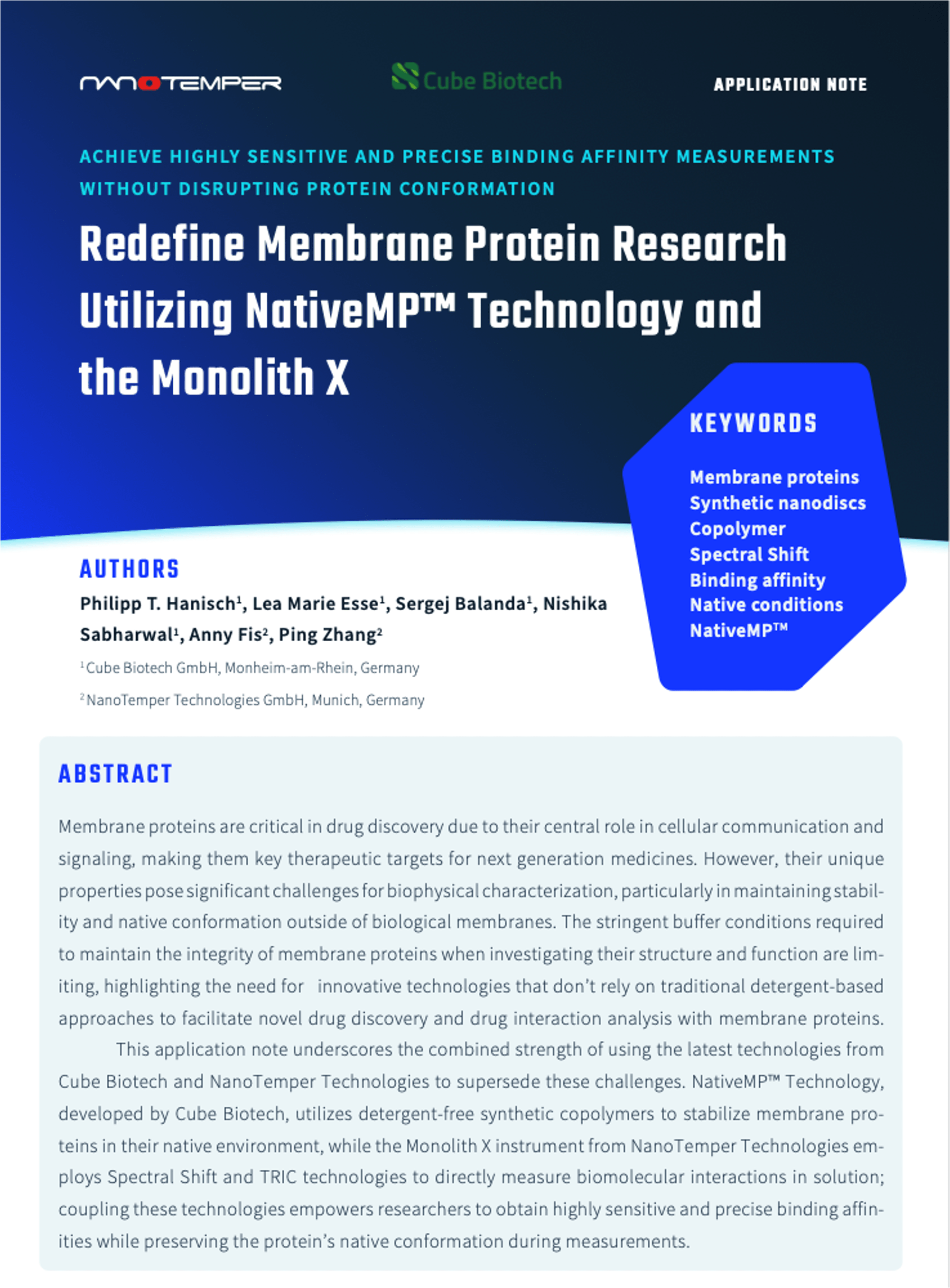Thomas H.Scheuermann, Shae B.Padrick, Kevin H. Gardner, Chad A.Brautigam
Science Direct
2016 vol: 496 pp: 79-93 doi: 10.1016/j.ab.2015.12.013
Abstract
A comprehensive understanding of the molecular mechanisms underpinning cellular functions is dependent on a detailed characterization of the energetics of macromolecular binding, often quantified by the equilibrium dissociation constant, KD. While many biophysical methods may be used to obtain KD, the focus of this report is a relatively new method called microscale thermophoresis (MST). In an MST experiment, a capillary tube filled with a solution containing a dye-labeled solute is illuminated with an infrared laser, rapidly creating a temperature gradient. Molecules will migrate along this gradient, causing changes in the observed fluorescence. Because the net migration of the labeled molecules will depend on their liganded state, a binding curve as a function of ligand concentration can be constructed from MST data and analyzed to determine KD. Herein, simulations demonstrate the limits of KD that can be measured in current instrumentation. They also show that binding kinetics is a major concern in planning and executing MST experiments. Additionally, studies of two protein-protein interactions illustrate challenges encountered in acquiring and analyzing MST data. Combined, these approaches indicate a set of best practices for performing and analyzing MST experiments. Software for rigorous data analysis is also introduced.
Topics: PALMIST, Protein–protein interactions, Isothermal titration calorimetry, Hypoxia-inducible factor, Actin, Monolith – MicroScale Thermophoresis, MST, Proteins, Publications












